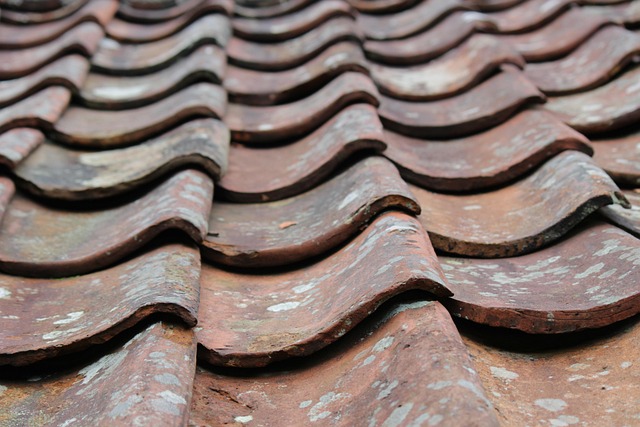Regular maintenance and inspections are crucial for roof leak prevention, focusing on common problem areas like vents, skylights, and valleys. Flashing, while protective, degrades over time, making it a frequent source of leaks. Visual inspections and advanced technologies like infrared thermal imaging, radar, and GPR help detect hidden leaks and damage, enabling prompt repairs to avoid structural damage and high repair costs. Professional roof leak detection services play a vital role in identifying issues early, ensuring seals remain intact, and extending the lifespan of roofing materials.
“Uncover common leak areas often overlooked—flashing, vents, and skylights—with our comprehensive guide. From understanding vulnerable points around flashing to advanced techniques for hidden leak detection, we equip you with essential knowledge for roof leak prevention. Regular visual inspections of vents and skylights are crucial, as these can be significant contributors to water damage. Discover the importance of routine roof inspections and learn how to catch potential issues early using our expert tips for effective roof leak detection services.”
Understanding Common Leak Areas Around Flashing
Understanding Common Leak Areas Around Flashing
When it comes to roof leak detection, flashing plays a critical role in identifying potential problem areas. Flashing is a thin layer of waterproof material used to seal joints and openings in a roof system, such as around vents, skylights, and valleys. Despite its protective function, flashing can degrade over time due to weather exposure, poor installation, or age, making it a common source of leaks in residential and commercial properties. Professionals in roof leak detection services are trained to inspect these areas meticulously, looking for signs of damage, disintegration, or improper sealing that could lead to water intrusion.
Regular maintenance is key to preventing leaks around flashing. Homeowners and property managers should schedule routine inspections to check for any visible wear and tear or loose connections. During these checks, it’s essential to examine the integrity of caulked joints, ensure proper drainage systems are in place, and verify that vents and skylights are securely fastened. Early detection of issues can save significant costs associated with roof leak repair and prevent further damage to the building’s interior.
Visual Inspection of Vents: What to Look For
A visual inspection is a crucial first step in identifying potential roof leak detection areas, especially for vents, which can be often overlooked. During this process, experts recommend scanning for any visible signs of damage or debris accumulation. Look out for cracks or corroded metal, as these could indicate weaknesses that water might exploit. Check the vent’s flashing—the material that seals the joint between the vent and the roof—for any gaps or tears. Even small openings can allow moisture to infiltrate, leading to significant damage over time.
Additionally, ensure all vents are securely fastened and aligned. Misaligned or loose vents can create entry points for water during storms or heavy rainfall. By meticulously examining these components, roof leak detection services professionals can pinpoint areas that may require repair or replacement, thereby preventing potential water intrusion and associated structural damage.
Skylight Maintenance: A Key Component in Roof Leak Prevention
Skylights, while enhancing natural light and providing a unique design element, can be particularly vulnerable to leaks if not properly maintained. Regular inspection and upkeep are essential components of roof leak detection services. Even the smallest crack or misalignment in flashing around skylights can allow water intrusion, leading to costly damage below.
Proper maintenance involves checking for any signs of damage, corrosion, or loose connections. Ensuring that the flashing is securely attached and sealed around the skylight opening is crucial. Additionally, regular cleaning of skylight components helps prevent debris buildup, which could obstruct drainage systems and contribute to leak formation.
Advanced Techniques for Detecting Hidden Leaks
Many leaks go unnoticed for long periods, hiding in plain sight within walls, attics, or behind fixtures. To uncover these elusive problems, professionals employ advanced techniques such as infrared thermal imaging, which visualizes heat signatures to highlight areas of water intrusion or elevated moisture levels. Radar and ground-penetrating radar (GPR) are also valuable tools; they can detect anomalies beneath surfaces, including buried pipes or structural damage that might be sources of leaks.
Additionally, moisture meters measure humidity levels, aiding in the identification of wet spots often associated with hidden leaks. Combining these advanced techniques with thorough visual inspections allows comprehensive roof leak detection services to pinpoint problem areas accurately and efficiently, ensuring prompt repair and preventing further damage.
The Role of Regular Roof Inspections in Preventing Water Damage
Regular roof inspections are an essential aspect of maintaining a water-tight and secure home, especially in regions prone to varying weather conditions. Professional roof leak detection services play a pivotal role in identifying potential issues before they escalate into costly repairs or severe water damage. During these inspections, experts thoroughly examine various components such as flashing, vents, and skylights—areas often overlooked but particularly vulnerable to leaks. By performing periodic checks, homeowners can ensure that these crucial seals remain intact and effective, preventing water intrusion during storms or extreme temperatures.
Such inspections offer several benefits beyond leak prevention. They allow for the early detection of minor issues, which can be addressed before they transform into major problems. Moreover, regular maintenance helps extend the lifespan of roofing materials, saving on replacement costs in the long run. In today’s digital era, many roof leak detection services employ advanced technologies to streamline the inspection process, making it more efficient and accurate.
In conclusion, preventing roof leaks starts with thorough inspection and proactive maintenance. By understanding common leak areas around flashing, visually inspecting vents for defects, and regularly maintaining skylights, homeowners and property managers can significantly reduce the risk of water damage. Advanced techniques for detecting hidden leaks further enhance these efforts, ensuring that any potential issues are identified and addressed promptly. Regular roof inspections are crucial in this process, making it essential to consider professional roof leak detection services for comprehensive peace of mind.
